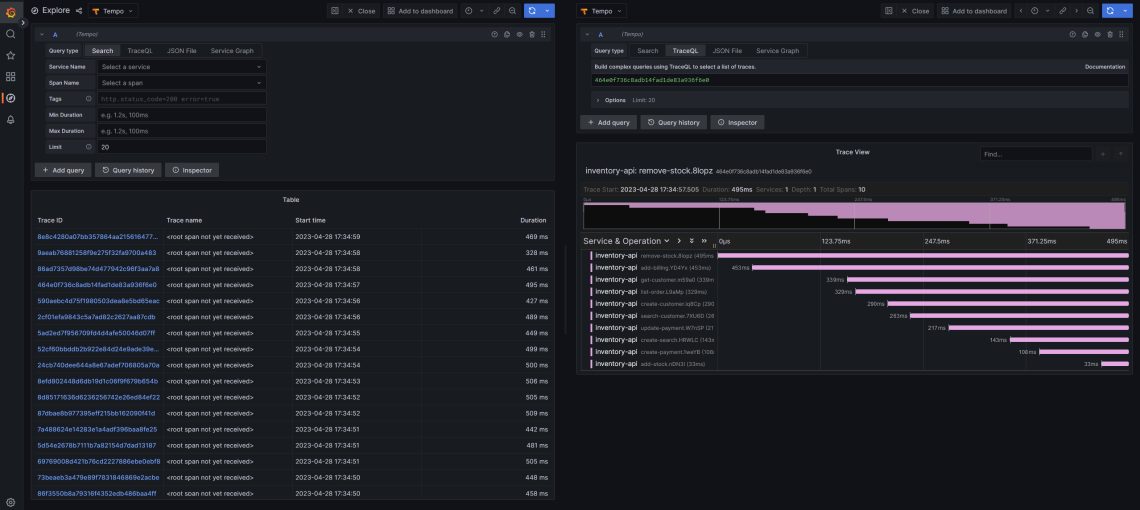Installing Tempo
I want to play with OpenTelemetry, so I figured I’d install Grafana’s Tempo in my cluster. I’m going to use ArgoCD to install the Helm chart.
Upgrading ArgoCD
In order to use values.yaml with the Helm chart, we need a version of ArgoCD that supports multiple repository sources
for an application (2.6 or newer). I upgraded to the latest stable version:
wget https://raw.githubusercontent.com/argoproj/argo-cd/stable/manifests/install.yaml -O install.yaml
kubectl --namespace argocd apply -f install.yaml
Creating the ArgoCD application
To use a values.yaml file that’s not in the original chart repository, you need to add multiple repository sources.
At the moment, this isn’t supported by the web front-end or the command-line interface, so I created application.yaml
as follows:
apiVersion: argoproj.io/v1alpha1
kind: Application
metadata:
name: tempo
namespace: argocd
spec:
project: default
destination:
namespace: grafana
server: https://kubernetes.default.svc
sources:
- repoURL: https://grafana.github.io/helm-charts
chart: tempo-distributed
targetRevision: 1.2.11
helm:
valueFiles:
- $values/values.yaml
- repoURL: https://git.k3s.differentpla.net/roger/tempo.git
targetRevision: main
ref: values
I’ve already got Grafana installed, so installed Tempo into the grafana namespace alongside.
values.yaml looks like this (and should be pushed to the repository named in the Application spec):
gateway:
enabled: true
minio:
enabled: true
traces:
otlp:
http:
enabled: true
grpc:
enabled: true
distributor:
config:
log_received_spans:
enabled: true
Then I installed it with kubectl apply:
kubectl apply -f application.yaml
Grafana data source
After a few minutes, the installation had completed, so I added it as a data source in Grafana.
- In Grafana, go to Configuration -> Data sources.
- Click “Add new data source”.
- Under “Distributed tracing”, click “Tempo”.
- Because the Tempo gateway is in the same namespace as Grafana, the URL is just
http://tempo-gateway. - Click “Save & test”.
Generate some traces
kubectl --namespace grafana apply -f https://raw.githubusercontent.com/grafana/tempo/main/example/helm/microservices-loadtest.yaml
